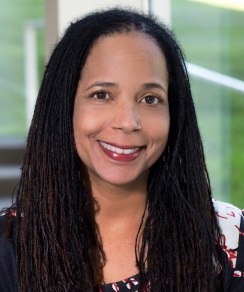How to Talk to Kids About Race and Racism
by Lee V. Gaines, Illinois Newsroom / Jun 17, 2020

With police brutality in the news, parents may be wondering how to talk to their children about racism and White supremacy. These conversations are familiar to Black families, but University of Illinois professors Shardé Smith and Helen Neville say all families should be having them.
Illinois Newsroom education reporter Lee Gaines recently spoke with Smith, an assistant professor of Human Development and Family Studies, and Neville, a professor of Educational Psychology and African American Studies, about best practices for both parents and educators.
Lee Gaines: Conversations about race and the police are something that Black parents have had to have with their children for a very long time. I want to acknowledge that reality first. What are some of the best practices — from an educational and trauma-informed standpoint — that Black families use to talk to their kids about race and also police brutality.
Dr. Sharde Smith: In our scholarly work, we refer to these messages as racial socialization, and these racial socialization practices are the messages that families send to their children about race and how to navigate a racialized society. Some refer to it as ‘the talk,’ but in addition to what is verbally communicated, families also socialize their children indirectly such as modeling their own behaviors and emotions when they do experience any type of trauma.
Black families use a combination of strategies to help children talk about race. Some of these practices include sending racial pride messages that foster a positive racial identity, teaching kids about their cultural traditions and holidays, possessing and reading books or watching movies about Black history and general topic books and movies that depict Black characters in a positive, non-stereotypical way. When communicating these types of messages, it builds up their self worth and fosters a sense of belonging, which can help youth process dehumanizing exclusionary racial events.
One other approach that black families use is preparing youth for racial bias. And this is a practice that Black families use to let kids know that they may be treated differently because of the color of their skin. Families often accompany these messages with ways to cope or navigate this event. And these messages can include keeping your hands at 10 and two if you’re ever pulled over by the police, or do not under any circumstance reach for your glove compartment before receiving permission. And even when you do receive that permission, do it slowly. So these types of messages can also include positive coping strategies to utilize. But when we’re preparing kids for bias like this, we’re equipping them with the tools (they need) to hopefully navigate these racial encounters successfully. LG: Dr. Neville, what have you witnessed, or what strategies have you heard Black families using that are successful?
LG: Dr. Neville, what have you witnessed, or what strategies have you heard Black families using that are successful?
Dr. Helen Neville: When we think about parents providing racial socialization messages to their youth, for them to have also explored their own socialization process. And so parents provide messages, not in a vacuum, but based on their own histories. So the first thing that I would also encourage parents to do is to begin to explore their own experiences with racism, potential trauma around that, how they dealt with that, how they currently feel about these experiences, and to get some support around that. And by doing that, they can be fully present for their kids as they help them navigate the difficult terrain of anti-Blackness and racism in this society.
Black families, in particular, are tasked with the idea of: how is it that we raise a child who can thrive in this environment that at times dehumanizes them? And one thing is to really focus on the individual aspect of the child, their strengths, their personality — to cultivate that piece. And, at the same time, to provide these other racial socialization messages that Dr. Smith has identified that deal with instilling a sense of cultural, racial, ethnic and cultural pride, preparing them for any potential bias that might happen in the future.
Read the full story and listen to the interview at the Illinois Newsroom...